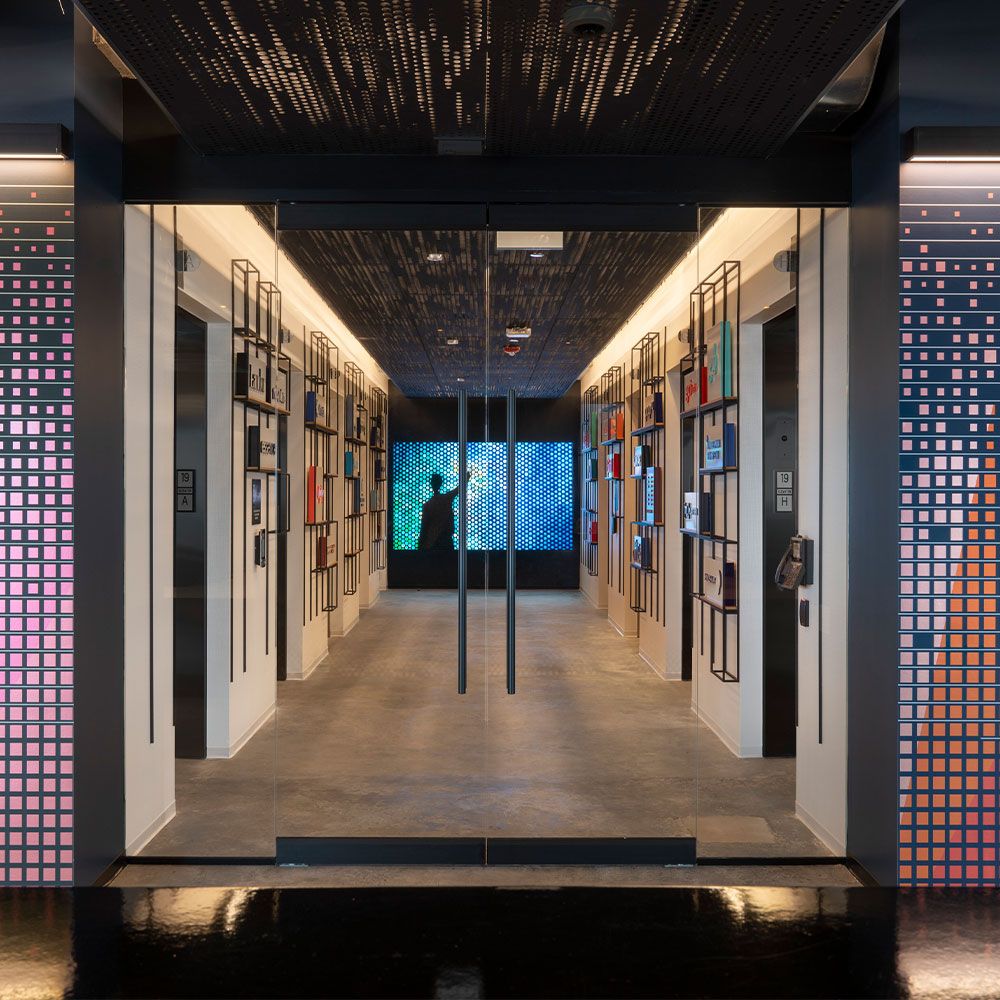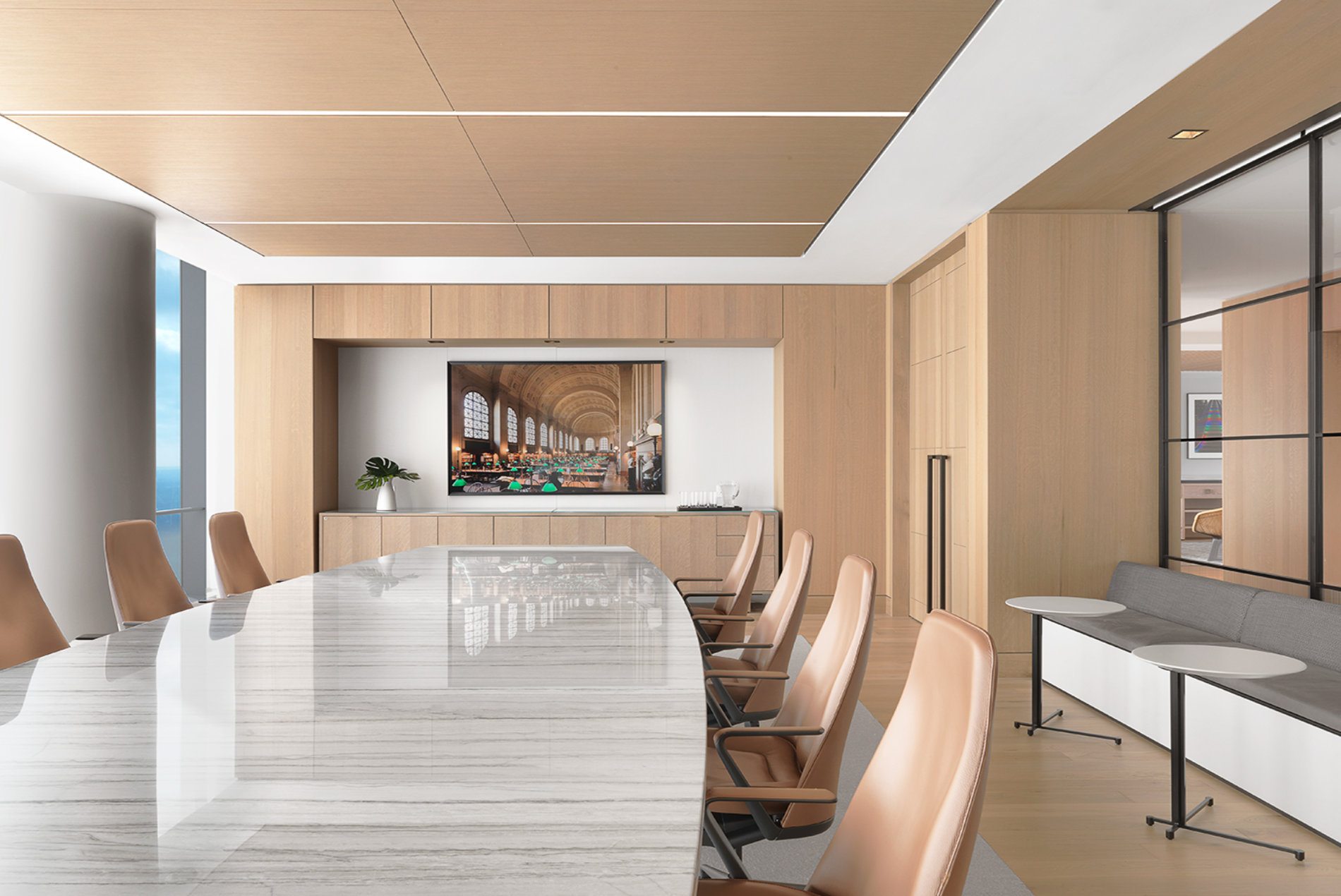
The studio-like environment is located in the heart of Chicago’s Fulton Market District, a former industrial neighborhood. Floor-to-ceiling windows offer views of the historic district.


The design plays with the concept of ‘push and pull,’ subtly communicating the give and take necessary for collaboration. The architectural language—angles, grid compositions and materiality—reinforces this sentiment.
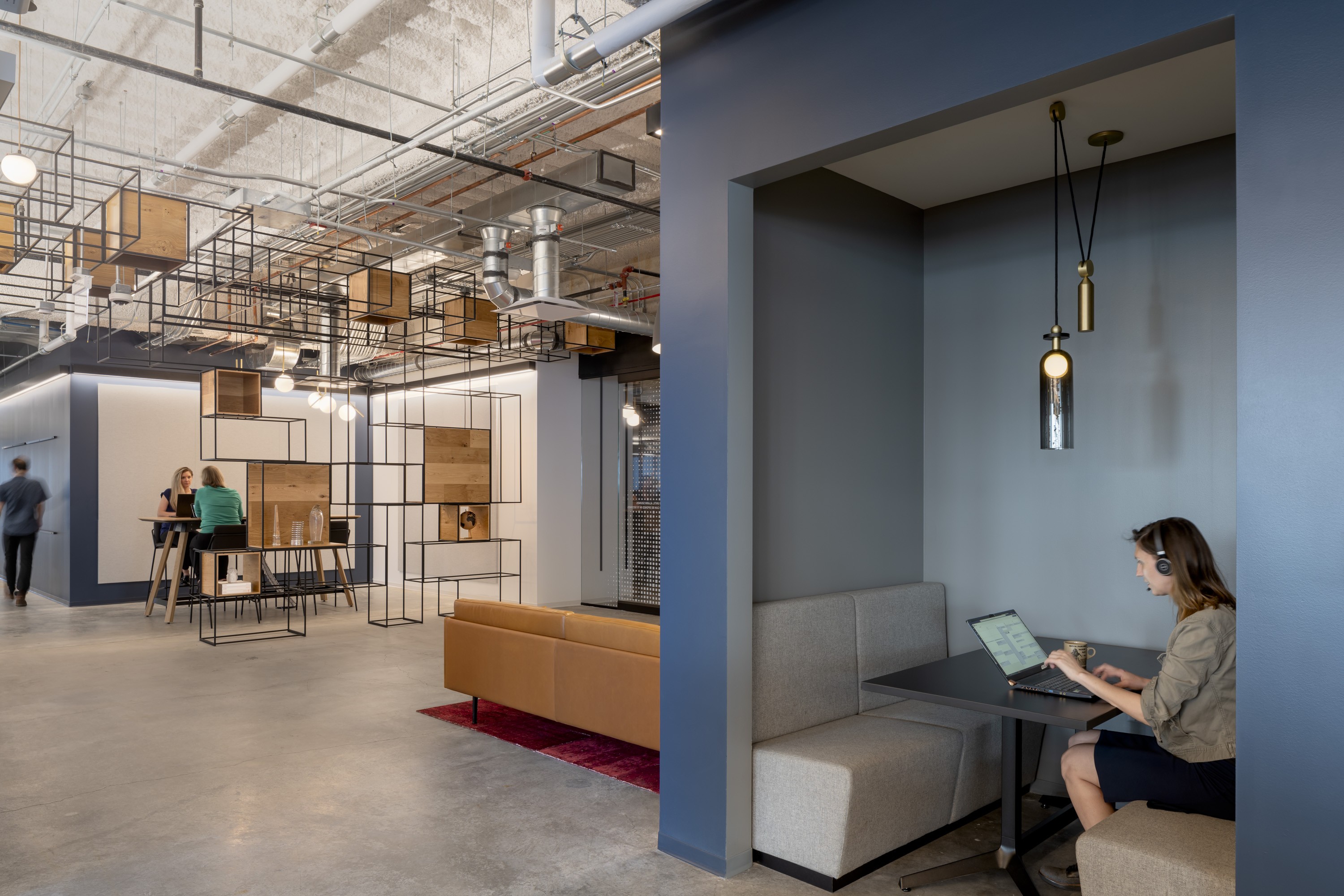
Spread across seven floors and more than 263,000 square feet, WPP’s Chicago campus emphasizes choice and autonomy via an agile working philosophy. Its people can select where and how they work based on the task at hand.
Three seating types—work benches, team tables and individual workspaces—accommodate solo work, collaborative projects, group learning and socializing.

Traditional bench workstations make up only 70 percent of the seating options. This encourages people to work in nontraditional, more collaborative ways.
The studio-like environment is highly flexible and adaptable for the future.


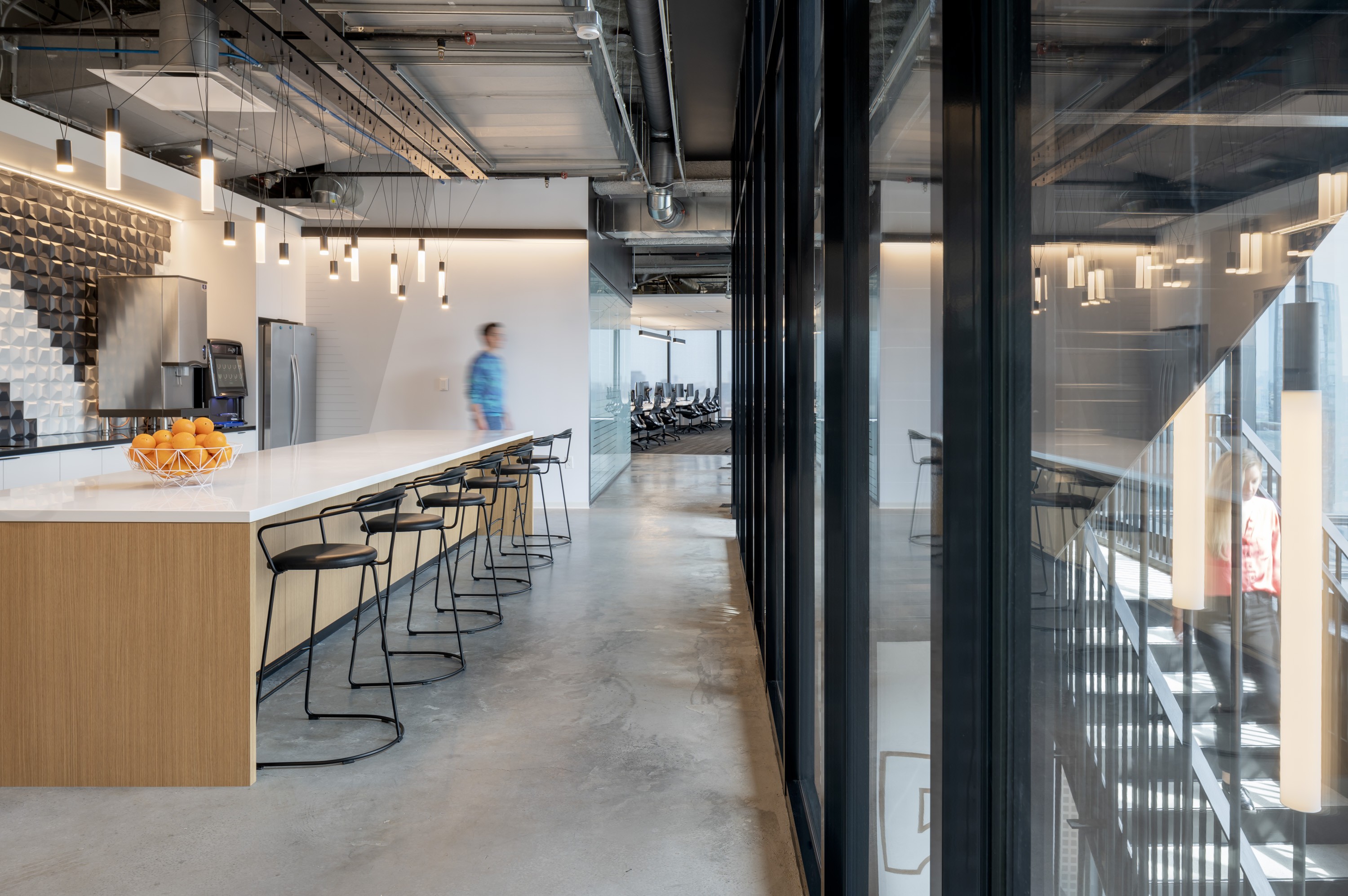
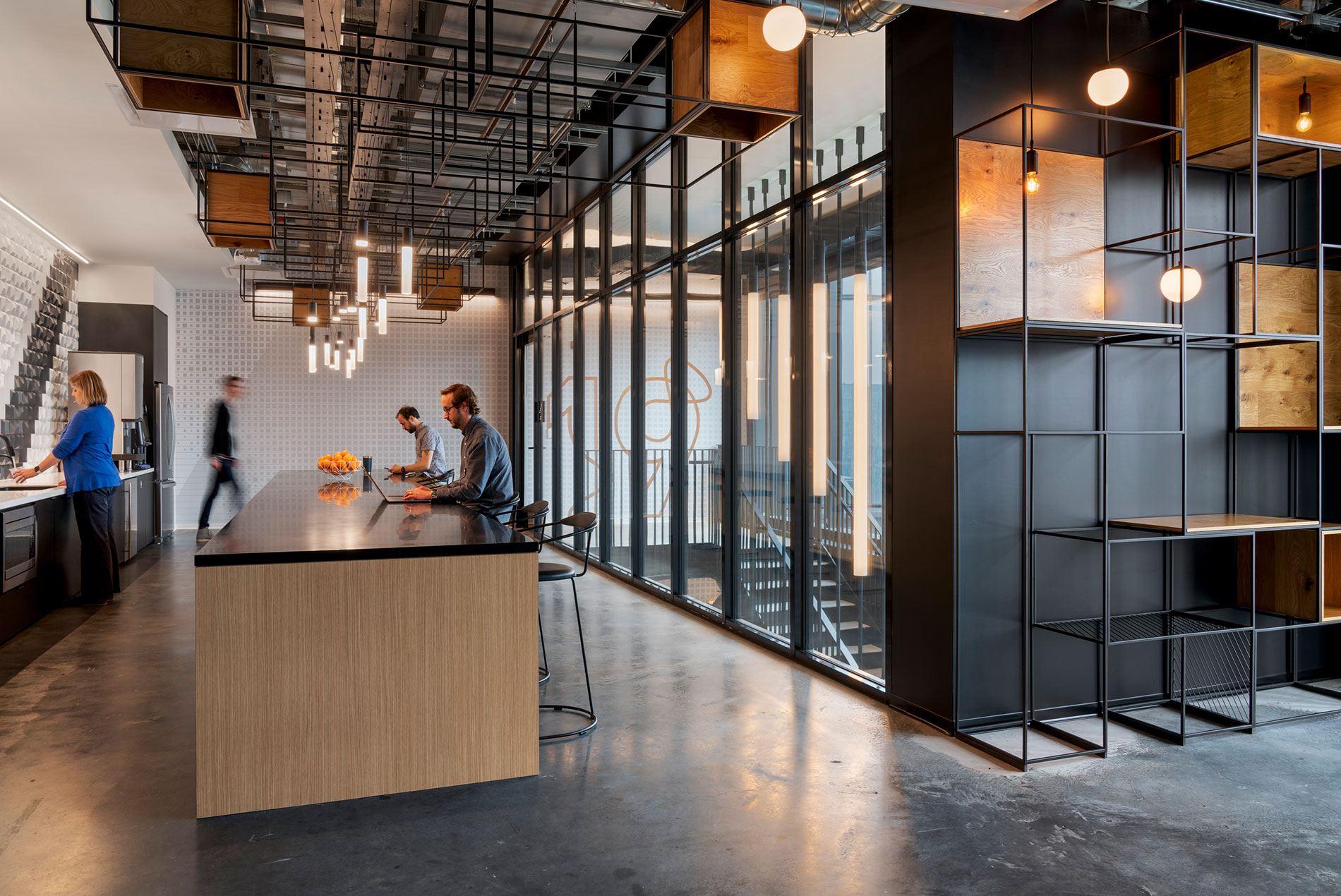
The stair connects to a shared amenities floor that includes a lounge, a 360-degree terrace, audio suites, production rooms, a photo studio, lockers and a café.
Workstations feature sit-stand desks and access to lots of daylight.
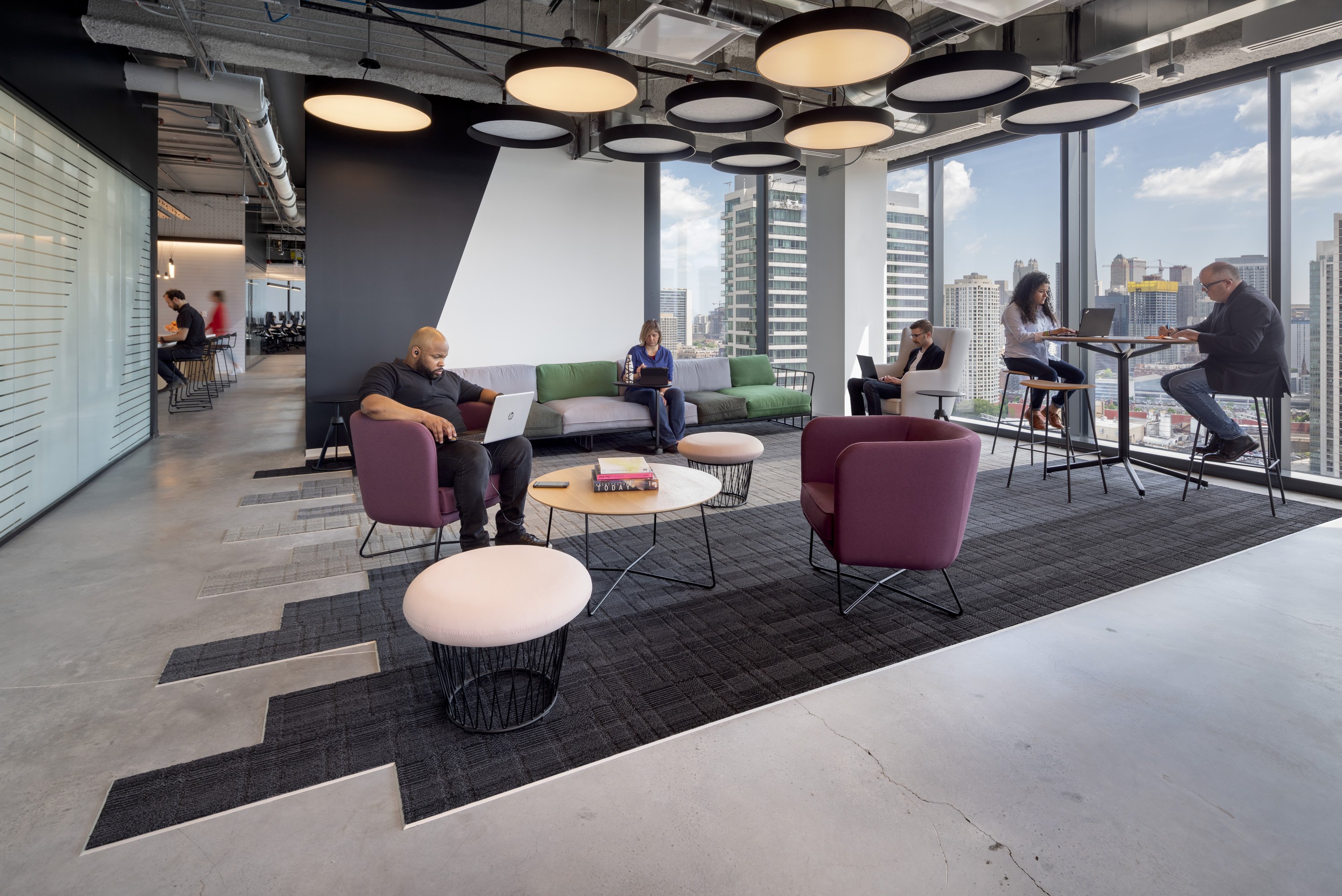
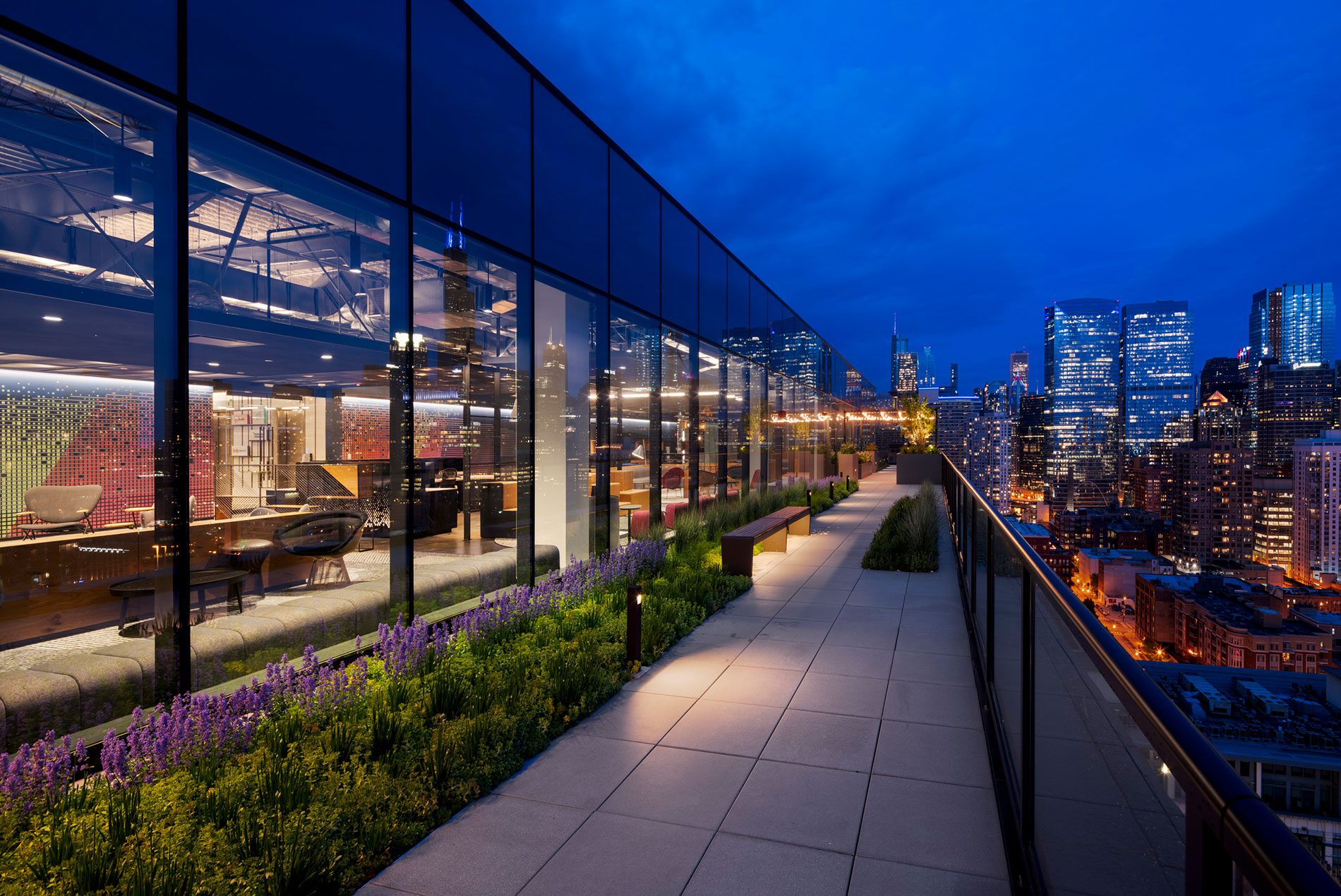
A glass curtain wall system allows daylight to reach deep into the building.
The space is punctuated with greenery, including a planted terrace on the 19th floor that provides an oasis in the heart of Chicago.
A wellness center prioritizes the health and wellbeing of occupants.
HOK used insights from employee surveys, town halls, leadership interviews and observation studies to ensure that the space supports the immediate and future needs of WPP.
In addition to providing design services, HOK developed a change management program to give WPP’s people a sense of ownership of their new space and position them to succeed in the new environment.
